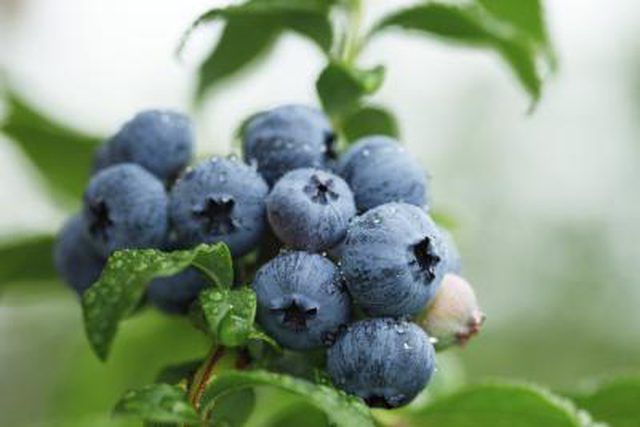Bulbs
Flower Basics
Flower Beds & Specialty Gardens
Flower Garden
Garden Furniture
Garden Gnomes
Garden Seeds
Garden Sheds
Garden Statues
Garden Tools & Supplies
Gardening Basics
Green & Organic
Groundcovers & Vines
Growing Annuals
Growing Basil
Growing Beans
Growing Berries
Growing Blueberries
Growing Cactus
Growing Corn
Growing Cotton
Growing Edibles
Growing Flowers
Growing Garlic
Growing Grapes
Growing Grass
Growing Herbs
Growing Jasmine
Growing Mint
Growing Mushrooms
Orchids
Growing Peanuts
Growing Perennials
Growing Plants
Growing Rosemary
Growing Roses
Growing Strawberries
Growing Sunflowers
Growing Thyme
Growing Tomatoes
Growing Tulips
Growing Vegetables
Herb Basics
Herb Garden
Indoor Growing
Landscaping Basics
Landscaping Patios
Landscaping Plants
Landscaping Shrubs
Landscaping Trees
Landscaping Walks & Pathways
Lawn Basics
Lawn Maintenance
Lawn Mowers
Lawn Ornaments
Lawn Planting
Lawn Tools
Outdoor Growing
Overall Landscape Planning
Pests, Weeds & Problems
Plant Basics
Rock Garden
Rose Garden
Shrubs
Soil
Specialty Gardens
Trees
Vegetable Garden
Yard Maintenance
How to Care for Blueberry Bushes
How to Care for Blueberry Bushes . Blueberry bushes (Vaccinium spp.) beautify their surroundings from spring through fall, but you probably crave their bountiful berries. If you garden in U.S. Department of Agriculture plant hardiness zones 3 through 11, a variety stands ready to deliver bowls of blueberries to your garden door. Blueberry bushes...
Blueberry bushes (Vaccinium spp.) beautify their surroundings from spring through fall, but you probably crave their bountiful berries. If you garden in U.S. Department of Agriculture plant hardiness zones 3 through 11, a variety stands ready to deliver bowls of blueberries to your garden door. Blueberry bushes aren't finicky, but they do require specific conditions and care. The rewards of abundant berries far outweigh your extra efforts.

Proper blueberry care starts with choosing varieties suited to your climate. Cold hardiness is one factor for these long-lived plants, but what are known as "chilling hours" enter in, too. Blueberry varieties require different amounts of low winter temperatures to be productive. High-chill berries need long, cool winters, while low-chill varieties are a better choice for warmer areas. Match your bushes to your climate for peak blueberry performance. Many blueberries are self-fertile, but growing more than one variety yields heavier harvests. Whatever varieties you choose, plant them where they'll get six to eight hours of direct sun each day. In hot climates, protect blueberries from the intense midday rays.
Thriving blueberries rely on well-drained, porous soil with plentiful organic matter and pH levels roughly 4.0 to 5.5. Blueberry-preferred nutrients stay available in this low-pH range, so test pH annually to stay on track. Peat moss at planting lowers pH in the short term. Cover the area with 4 to 6 inches of pre-moistened peat, and work it into your soil. Sulfur products acidify in the long term, but amounts vary depending on many factors. In sandy soil, 1.3 pounds of elemental sulfur lowers pH by 1.0 point when worked 6 inches deep into a 100-square-foot area. The same change takes 3 pounds of sulfur in clay soil. Overdoing it leaves soil toxic, so follow your soil test recommendations. If your soil pH is above 7.5, bypass the pH battle by growing blueberries in large containers with drainage holes, where pH is easily controlled.
Plump, juicy blueberries require consistent soil moisture. The plants' shallow, spreading roots demand plentiful oxygen, too. Too much water or too little interferes with roots' ability to use available nutrients and support healthy berries. Maintain a balance of moist, yet well-drained soil throughout the growing season. Water needs shift with the weather, so monitor soil moisture regularly. Soil down about 4 inches from the surface should stay cool and moist, yet never soggy. A 3-inch layer of organic mulch helps conserve moisture and keeps blueberry roots comfortable and cool. Keep the mulch at least 2 inches away from the stems.
An annual application of organic compost, paired with proper soil pH, provides all the nutrients most blueberries need. Blueberry roots are sensitive to over-fertilizing; they burn easily, especially on young plants. Fertilize blueberries only if they grow poorly or a soil test confirms a need. A 10-10-10 granular fertilizer labeled for use on acid-loving plants provides an extra nutritional boost. Broadcast 1/2 cup per plant in early spring and again in late spring, and water the area well after your application. If your water is alkaline, 2 teaspoons of household vinegar added to each gallon of water offsets the high pH.
Blueberry stems stop producing as they age, so bountiful harvests call for regular pruning. On new plants, remove the blossoms the first two years -- if you can stand waiting for berries -- so roots develop well. Then begin an annual program to remove one-third of each plant each year. Prune in late winter, and cut the oldest, thickest branches to the ground. Leave fresh, young stems. Use sharp bypass pruners, and sterilize the blades with household disinfectant before and after each bush. Well-tended blueberries have few pests or diseases, but expect competition from birds. Protect your harvest with birdproof netting, secured all the way to the ground.